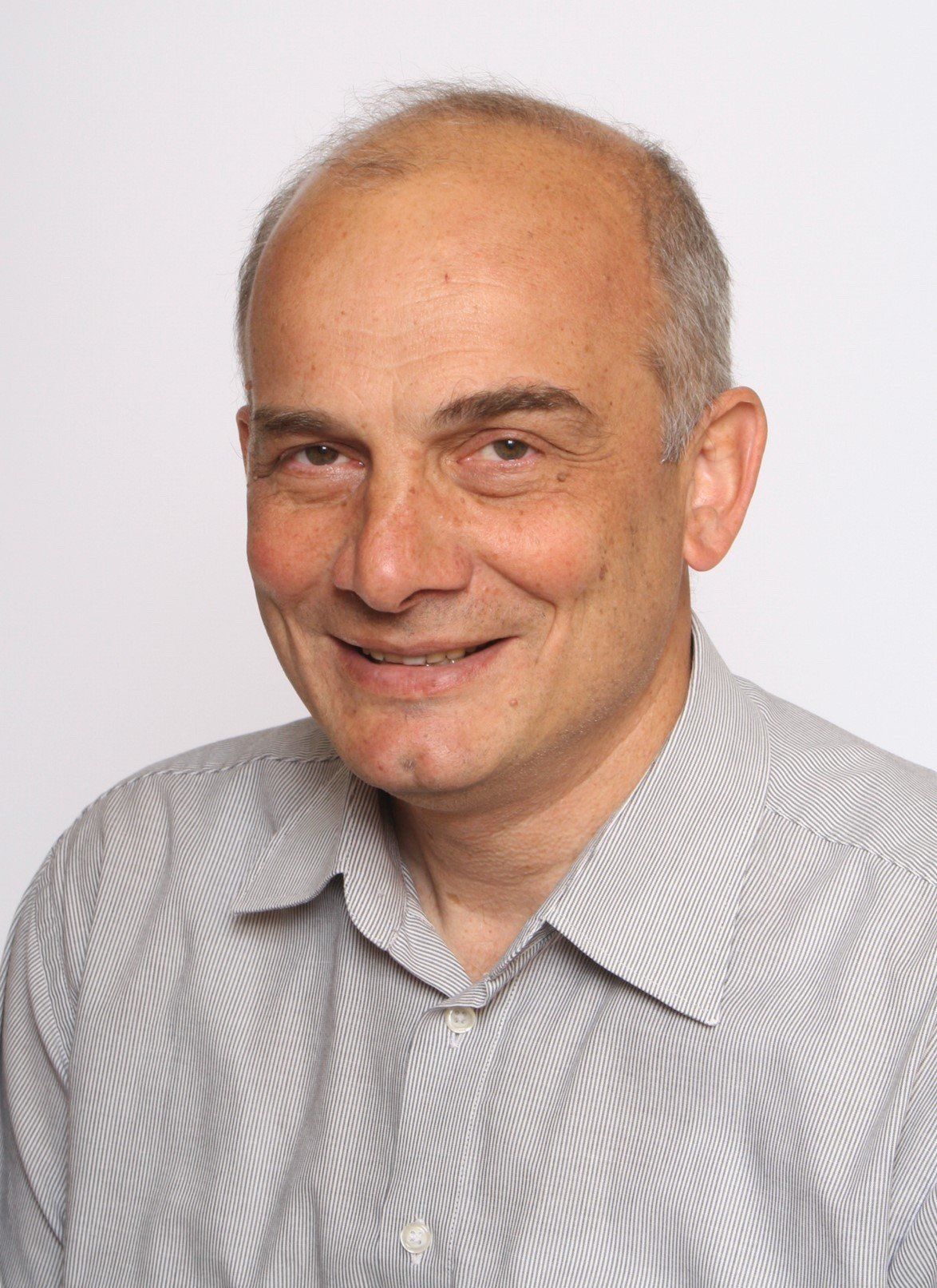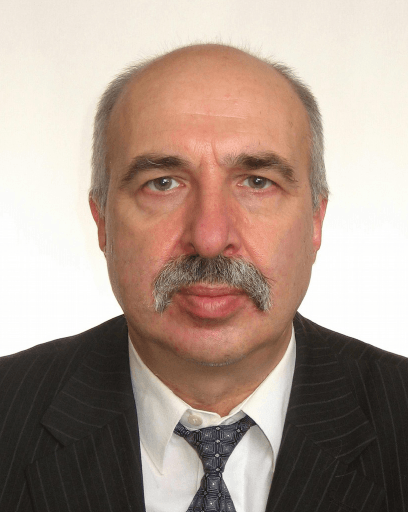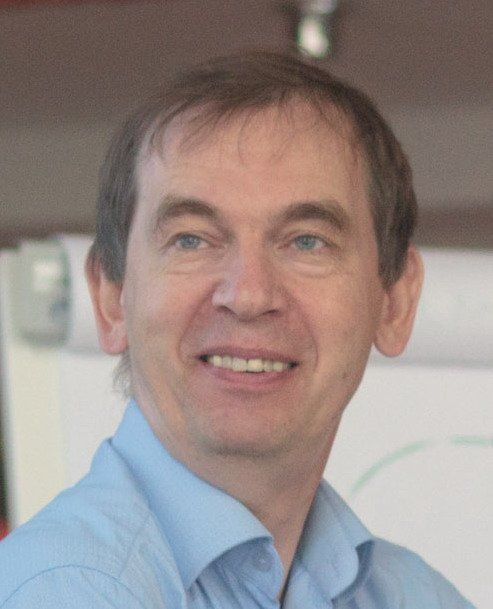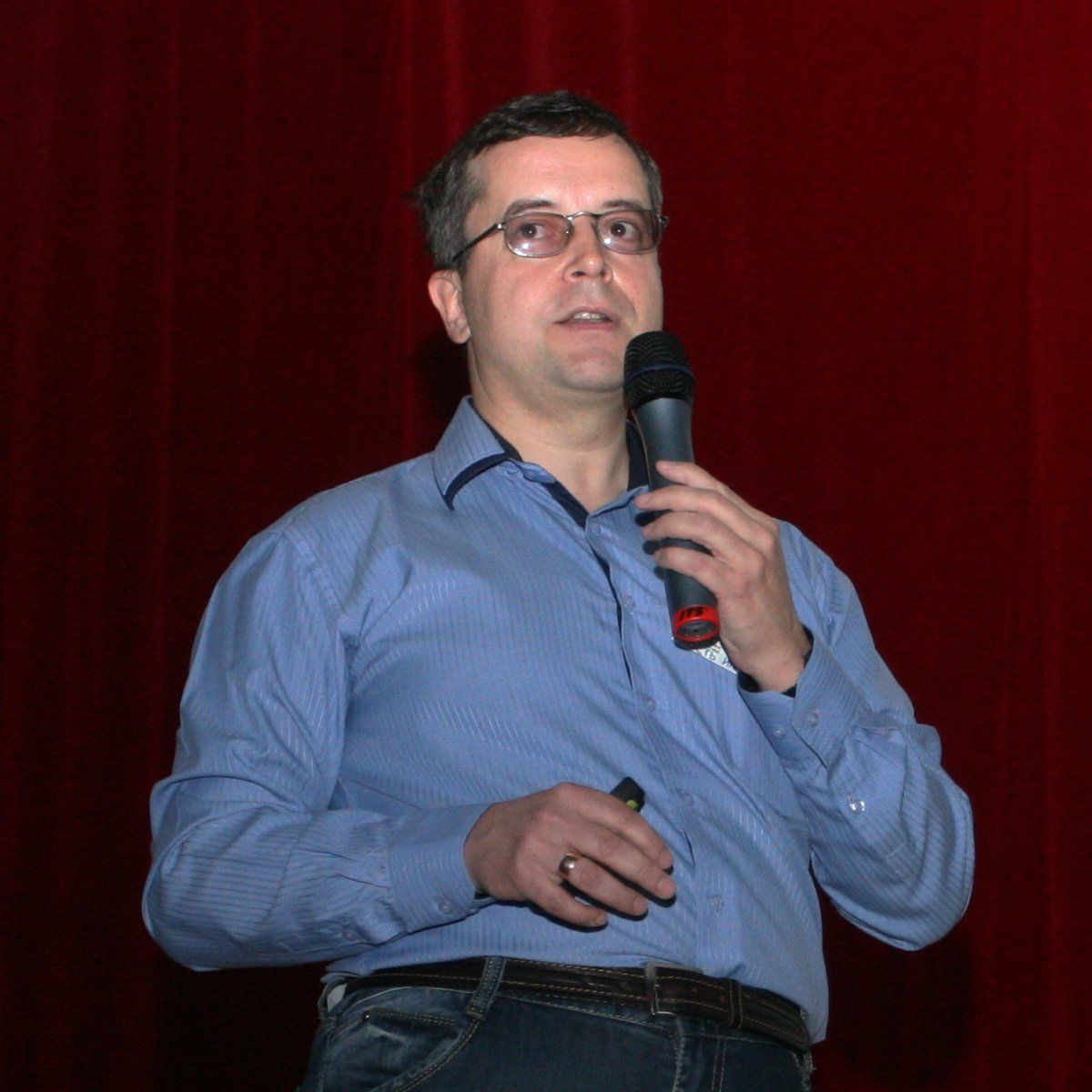This web page is created within BALTICS project funded from the European Union’s Horizon2020 Research and Innovation Programme under grant agreement No.692257.
BAASP 2019
LEONID GURVITS
Head of Space Science and Innovative Applications Group – Joint Institute for VLBI ERIC (JIVE), Dwingeloo, The Netherlands
Prof. dr. Leonid Gurvits has graduated from the Lebedev Physical Institute (Moscow, Russia) in Astrophysics. Dr. Gurvits has more than 180 papers published in international refereed journals and proceedings of international conferences.
Main professional activities:
- VLBI studies of extragalactic radio sources, cosmological tests;
- Design studies, project implementation, science operations and management of Space VLBI missions (VSOP/HALCA, RadioAstron);
- Square Kilometre Array Design Studies;
- VLBI tracking of planetary and space science missions;
- Project studies of advanced space-borne radio astronomy facilities, including ultra-long-wavelength facilities interferometers.
- SPACE SCIENCE FRONTIER OF RADIO INTERFEROMETRY: A VIEW FOR AND FROM IRBENE
Leonid I. Gurvits(1,2)
(1) Joint Institute for VLBI ERIC, Dwingeloo, The Netherlands
(2) Department of Astrodynamics and Space Missions, Delft University of Technology, Delft, The Netherlands
Space science frontier of Very Long Baseline Interferometry (VLBI) offers a rich set of multi-facet and multi-disciplinary applications. It includes extension of VLBI technique to extraterrestrial baselines (Space VLBI) and observations of deep space probes with Earth-based radio telescopes (near-field VLBI). Both areas are highly relevant to the radio astronomy and space science developments at the Ventspils International Radio astronomy Center and Latvia in general.
Extension of radio interferometric baselines into space is inevitable if a diffraction-limited angular resolution defined by the Earth diameter at a given observing wavelength limits pursuit of specific scientific goals. This was understood in early1960s, at the very dawn of the era of Earth-based Very long Baseline Interferometry (VLBI). Since then, the first ad hoc demonstration Space VLBI experiment with the Tracking and Data Relay Satellite (TDRS, 1986-88) and two dedicated missions, the VLBI Space Observatory Programme (VSOP, 1997-2003) and RadioAstron (2011-2019), enabled studies of celestial radio sources with an unprecedentedly sharp angular resolution reaching 0.1 nanoradian. The latest of these first-generation SVLBI missions, RadioAstron, has completed its in-orbit program recently. The Irbene 32-m radio telescope participated in a number of observations with RadioAstron. I will present a brief review of the mission results.
A spacecraft emitting radio signals can be treated in VLBI observations as a point-like source, thus offering a principle opportunity to apply to this source the might of VLBI astrometry. However, “traditional” astronomical VLBI systems are based, among other things, on the assumption that the target is infinitely far away, i.e. is located in the “far field”. The Fraunhofer distance defines the “border” between “far-field” and “near-field”. For all practical VLBI applications with modern spacecraft, a target range is well within the Fraunhofer distance. Thus, “traditional” VLBI algorithms, especially those used in VLBI astrometry, must be modified for estimating lateral coordinates of a spacecraft. At present, JIVE and its partners are working on implementing the near-field VLBI technique as Planetary Radio Interferometry and Doppler Experiment (PRIDE) of the ESA’s Jupiter Icy Satellites Explorer (JUICE). I will present several recent results of PRIDE observations of various planetary missions and give a brief overview of the PRIDE-JUICE. Both the Irbene 32 and 16-meter antennas have a very promising potential for contributing in PRIDE and other near-field VLBI applications.
OLEG ULYANOV
Head of the Decameter Radio Astronomy Department of Institute of Radio Astronomy of NASU, Kharkov, Ukraine
Since 1986 Oleg Ulyanov has been working at the Radio Astronomy Institute of the National Academy of Sciences of Ukraine in Kharkov as a Senior engineer, junior Researcher, Research Associate, Senior Researcher. Currently, he serves as a head of the Department of Decametric Radio Astronomy. Dr O. Ulyanov participated in various national and international astrophysical research projects with using largest radio telescopes in the world. He has co-authored of more than 130 scientific publications. His scientific interests area is astrophysics, radio astronomy, computer science, radio engineering.
Dr O. Ulyanov a member of the International Astronomical Union from 2010, laureate of the Scientific Prize of the National Academy of Sciences of Ukraine named academician S.Ya. Braude in 2017 and nominee of the State Prize of Ukraine in the field of science and technology in 2018.
- FAST PROCESSING OF LOW FREQUENCY RADIO ASTRONOMY DATA USING GPUs
O. Ulyanov, M. Plakhov, A. Shevtsova, A. Skoryk
Institute of Radio Astronomy of the National Academy of Sciences of Ukraine
Mystetstv str. 4, Kharkiv, 61002, Ukraine
The aim of this work is to determine the possibility of using NVIDIA GPUs for spectral/correlation analysis and processing of low-frequency radio astronomy data produced by low-frequency radio telescopes UTR-2, URAN-2, GURT, LWA, LOFAR, NENUFAR in real time (”on the fly”). We will show limits in processing speed achieved by NVIDIA graphics cards. We have compared the execution speed of different FFT/IFFT implementation plans applying on a large data set. We have tested some types of graphics processing units (GPUs) and central processing unit (CPU) Intel Core i7 with different plans and different GPU drivers. Also, computational errors of the FFT/IFFT implementation plans are estimated.
GINO TUCCARI
Senior Technologist at INAF – National Institute of Astrophysics, Institute of Radioastronomy of Bologna, Italy
Guest Scientist at the Max Planck Institute for Radioastronomy, Germany
Dr. Gino Tuccari has graduated from Catania University in Physics. He is author and co-author in more than 200 international and Italian papers, congress contributions and technical reports. Also Dr Tuccari has invented five Italian patents, one of them EPO (European) extended, one PCT (worldwide) extended.
Dr. Tuccari’s recent technological and scientific research activities are related to:
- development of radio-astronomy instrumentation;
- main development is the DBBC radioastronomy instrumentation family,
- a complete VLBI terminal operating in the digital domain, adopted by the European VLBI and Auscope networks, used in the IVS and EHT networks;
- development of low noise receivers and high-temperature superconducting devices.
- ANTARR – ETNA LOW-FREQUENCY ANTENNA ARRAY
G. Tuccari (1,2), M. Wunderlich (2), S. Dornbusch (2), G. G. Tuccari (3)
1 INAF Instituto di Radioastronomia, Italy 2 Max Planck Institute fur Radioastronomie, Germany 3 HAT-Lab srl, Italy
A project called “AntArr” as a new application of the DBBC3 (Digital Base Band Converter, 3rd generation) is presented. A group of antennas operating at low frequencies, in the range from 10 MHz up to 1500 MHz, are phased up for VLBI, for pulsar and more recently for FRB observations. Part of the scientific program is also dedicated to SETI activities in piggy-back mode.
Dedicated elements can even be added to reach still lower frequencies to observe the range down to kHz frequencies. The DBBC3 manages the array operations in a selected portion of the band and the main characteristic is to synthesize a beam with an innovative approach. The final product of the array is a single station standard VLBI data stream for correlation with other antennas or a synthesized beam for single-dish observations.
A number antenna and array prototypes have been realized and are under test at a location on the Etna volcano slope, with the aim form a complete radio telescope of 1024 elements in 2020. This project completes the lower part of the frequency spectrum covered in VLBI by the BRAND EVN project, which will be shortly mentioned.
The project AntArr is hosted and financed by HAT-LAB srl, which is the manufacturer of the DBBC family backends.
VASILY S BESKIN
Leading Scientific Researcher, P.N. Lebedev Physical Institute RAN, Moscow, Russia
Since 1979 Vasily Beskin has been working at Theoretical Department of the P.N.Lebedev Physical Institute of the Russian Academy of Sciences in Moscow, now as a leading scientific researcher. Also, he is a professor at the Moscow Institute of Physics and Technology. He has co-authored of more than 150 scientific publications including 5 monographs. His scientific interest areas are relativistic and plasma astrophysics, compact astrophysical objects (neutron stars, black holes), radio pulsars and active galactic nuclei.
Prof. V.S.Beskin is a member of the International Astronomical Union from 2010 and laureate of the Scientific Prize of the Russian Academy of Sciences named academician L.I.Mandelshtam in 1994.
- RADIO PULSARS
V.S. Beskin
P.N. Lebedev Physical Institute of the Russian Academy of Sciences
Leninsky prosp. 53, Moscow, 119991, Russia
Although fifty years have passed since the discovery of radio pulsars, there is still no satisfactory understanding of how these amazing objects operate. While there has been significant progress in understanding the basic properties of radio pulsars, there is as yet no consensus on key issues, such as the nature of coherent radio emission or the conversion mechanism of the electromagnetic energy of the pulsar wind into particle energy. In my review, the main theoretical results on the pulsar radio emission will be presented. A number of apparently simple questions will be formulated, which nevertheless remain unanswered since the very beginning of the field and which must be resolved before any further progress can be made.
DMITRI WIEBE
Head of the Physics and Evolution of Stars Department of the Institute of Astronomy of the RAS, Moscow, Russia
Dmitri Wiebe has graduated from the Ural State University (Ekaterinburg, Russia) in 1992. Since 1996 he works at the Institute of Astronomy (Moscow, Russia). He has defended his PHD degree in 1997 and has obtained the second doctoral degree in 2005. His main scientific interests are astrochemistry, star and planet formation, physics of the interstellar medium. Also, he teaches two astrochemistry courses at the Moscow State University. Dr. Wiebe is an author of more that 60 papers in refereed journals. In 2005, he has been awarded Belopolsky prize of the Russian Academy of Sciences. Along with scientific duties, Dr. Wiebe is also IAU National Outreach Coordinator in Russia and a member of Commission 13 of IUPAP.
- ASTROCHEMISTRY DURING PROTOSTELLAR AND PROTOPLANETARY EVOLUTION
D. Wiebe
Insitute of Astronomy of the RAS 48, Pyatnitskaya str. Moscow, 119017 Russia
Life on Earth is a result (or a passing phase) in the chemical evolution of the interstellar and circumstellar material. Even if we start with the atomic initial composition, a complicated set of chemical processes efficiently combines available atoms into a rich variety of molecules, including numerous organic compounds. After the onset of the star and planet formation process, the initial inventory of molecules is exposed to a much wider range of physical conditions in a protoplanetary disk. The chemical structure of the disk may eventually define surface and bulk composition of planets forming in the disk.
If you have questions, please contact us by writing to the email address baasp2019@venta.lv with subject „BAASP2019”
E-pasts: virac@venta.lv
Tālrunis: +37163629656
Ekskursijas: +37129230818
Inženieru iela 101, Ventspils, LV-3601
Paldies par ziņu.
Mēs ar jums sazināsimies cik drīz vien iespējams.
Atvainojiet, ir notikusi kļūda.
Diemžēl ziņu nosūtīt neizdevās.
Lūdzu mēģiniet vēlreiz, vai sūtiet ziņu uz virac@venta.lv























